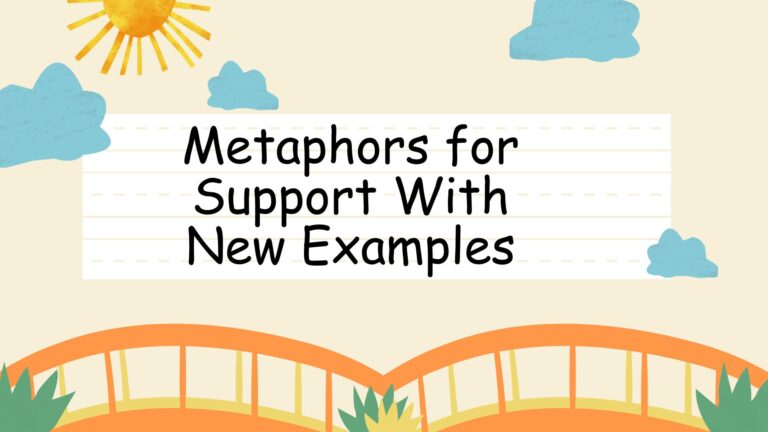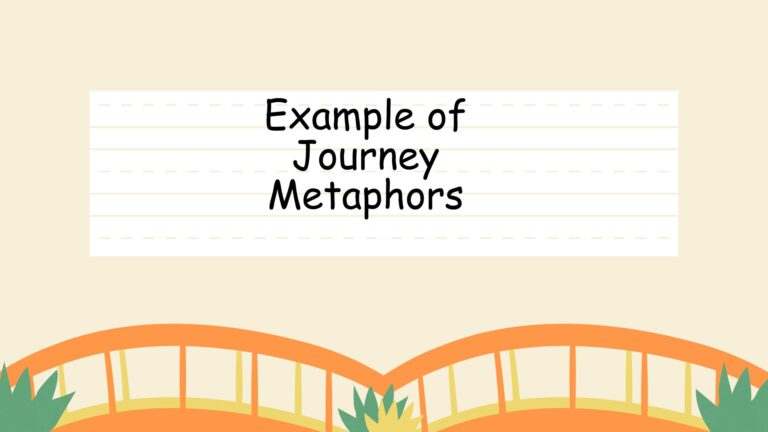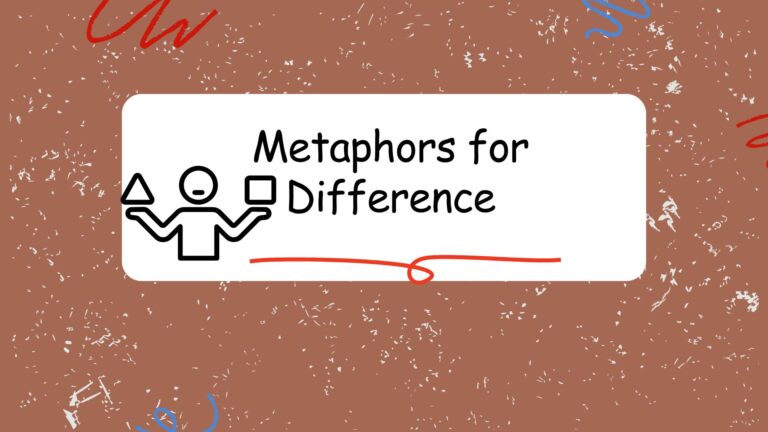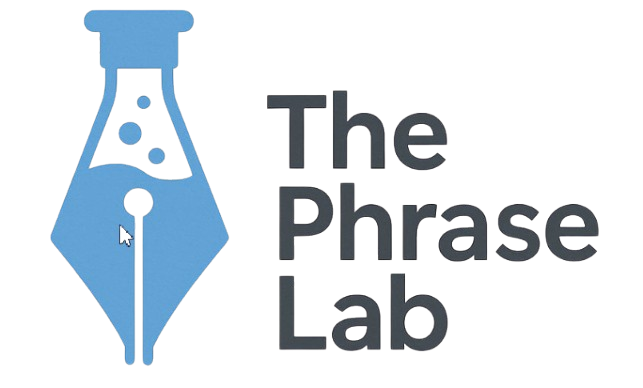
80 Plus Metaphors for Cold With Explanation
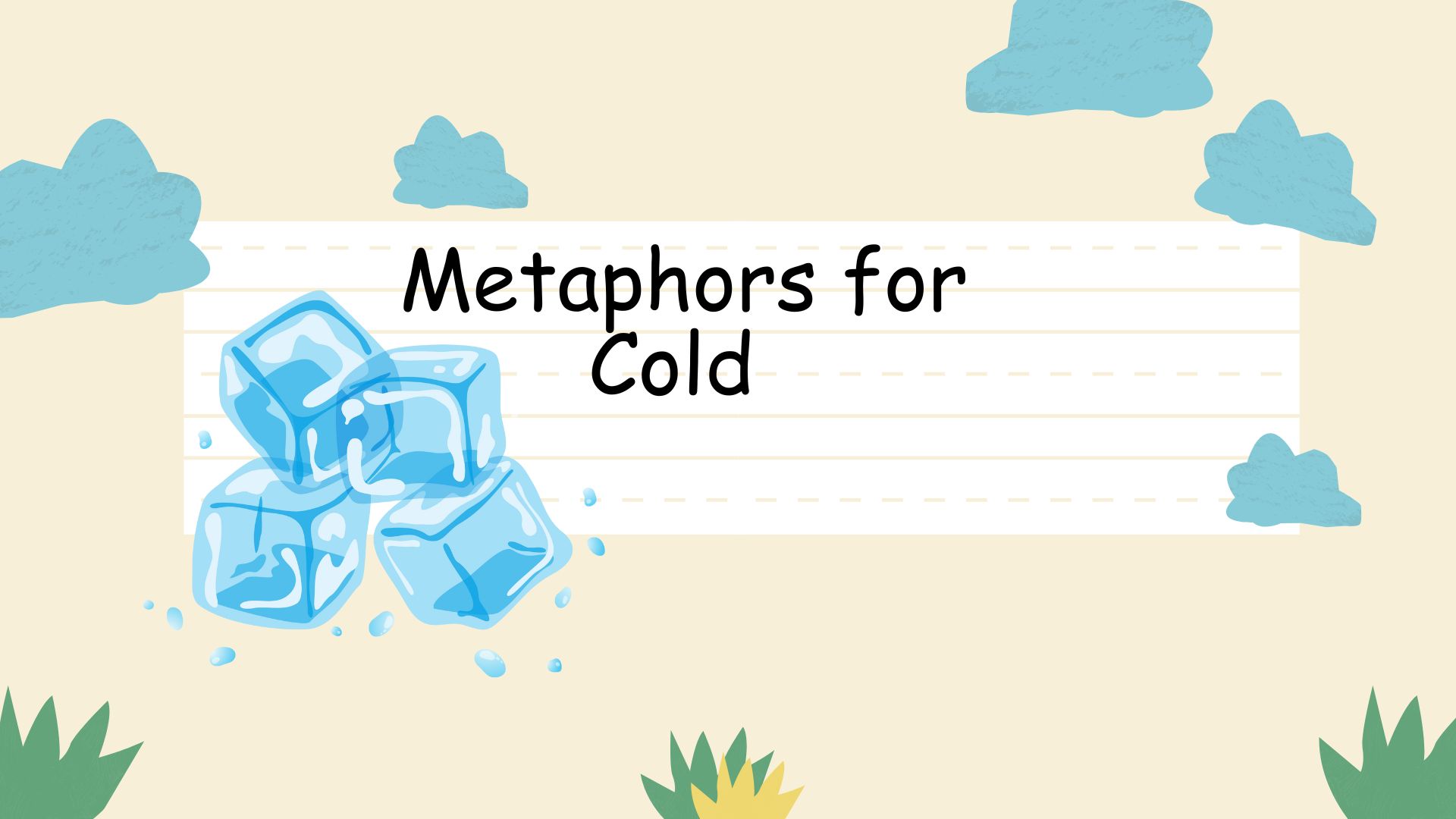
Understanding metaphors is crucial for mastering English, as they add depth and color to our language. Metaphors for ‘cold’ are particularly vivid, allowing us to express not only temperature but also emotions, attitudes, and even social situations. This article will explore the various types of metaphors used to describe coldness, providing numerous examples and practical exercises to enhance your understanding and usage. Whether you are an English language learner or a seasoned speaker, this comprehensive guide will help you appreciate the nuances of metaphorical language.
This guide is structured to make learning about metaphors for cold as accessible and engaging as possible. We’ll begin with a clear definition of metaphor and then delve into the specific ways coldness is metaphorically represented in English. Through detailed explanations, numerous examples, and practical exercises, you’ll gain a solid understanding of how to effectively use these metaphors in your own writing and speech.
Table of Contents
- Introduction
- Definition of Metaphor
- Structural Breakdown of Cold Metaphors
- Types of Cold Metaphors
- Examples of Cold Metaphors
- Usage Rules for Cold Metaphors
- Common Mistakes with Cold Metaphors
- Practice Exercises
- Advanced Topics in Cold Metaphors
- Frequently Asked Questions
- Conclusion
Definition of Metaphor
A metaphor is a figure of speech that directly compares two unrelated things, asserting that one thing is another. Unlike similes, which use “like” or “as” to make a comparison, metaphors imply a similarity between the two subjects without explicitly stating it. Metaphors are used to add color, depth, and emotional resonance to language, making it more engaging and evocative. They allow us to understand abstract concepts by relating them to more concrete or familiar ideas.
In essence, a metaphor transfers qualities from one thing to another to create a new understanding. For example, saying “He is a lion in battle” doesn’t mean he is literally a lion; it means he possesses the courage, strength, and ferocity associated with lions. The power of a metaphor lies in its ability to create a vivid image and convey complex emotions in a concise and memorable way.
Structural Breakdown of Cold Metaphors
Cold metaphors typically involve transferring qualities associated with low temperatures to other areas, such as emotions, social interactions, or situations. The basic structure often involves a subject (the thing being described) and a metaphorical term (the cold-related word or phrase). The connection between the subject and the metaphorical term is what creates the metaphorical meaning.
For instance, in the phrase “a cold heart,” the subject is “heart,” and the metaphorical term is “cold.” The coldness is not literal; instead, it implies a lack of warmth, empathy, or affection. Understanding this basic structure helps in identifying and interpreting metaphors effectively. The effectiveness of a metaphor depends on the audience’s ability to recognize the connection between the literal and figurative meanings.
Types of Cold Metaphors
Cold metaphors can be broadly categorized into several types, each reflecting a different aspect of coldness and its metaphorical application. These categories include physical cold, emotional cold, social cold, and situational cold.
Physical Cold
These metaphors relate to literal cold temperatures or sensations. They are used to describe environments, objects, or even people’s physical states. The focus is on the tangible feeling of coldness.
Emotional Cold
Emotional cold metaphors describe a lack of warmth, empathy, or affection. They are used to portray feelings of indifference, detachment, or even hostility. These metaphors often highlight the absence of emotional connection.
Social Cold
Social cold metaphors refer to social situations characterized by distance, exclusion, or unwelcoming behavior. They describe environments where individuals feel isolated or rejected. These metaphors often reflect a lack of social connection or acceptance.
Situational Cold
Situational cold metaphors describe circumstances that are bleak, harsh, or unfavorable. They are used to portray situations that lack promise or offer little hope. These metaphors often reflect a sense of despair or hopelessness.
Examples of Cold Metaphors
To better understand the different types of cold metaphors, let’s explore some specific examples in each category.
Physical Cold Examples
These examples illustrate how physical coldness can be used metaphorically to describe various tangible aspects.
The table below contains examples of physical cold metaphors. Each example demonstrates how the sensation of coldness is used to describe a physical state or environment.
| Metaphor | Explanation |
|---|---|
| The wind was a knife, cutting through his exposed skin. | The wind’s sharpness is compared to a knife, emphasizing its biting cold. |
| The room was an icebox, chilling everyone to the bone. | The room’s extreme coldness is likened to an icebox. |
| Her touch was like frost, sending shivers down his spine. | Her touch is described as cold and sharp, like frost. |
| The air hung like a freezer, making it hard to breathe. | The air’s intense coldness is compared to a freezer. |
| The mountains were frozen giants, towering over the landscape. | The mountains are personified as cold, imposing figures. |
| His breath turned to icy vapor in the frigid air. | The breath is described as cold and visible, like icy vapor. |
| The lake was a sheet of glass, reflecting the winter sky. | The frozen lake is compared to a smooth, reflective sheet of glass. |
| The snow was a blanket of ice, covering everything in sight. | The snow’s coldness and extensiveness are emphasized. |
| The night was a polar wasteland, devoid of any warmth. | The night’s extreme coldness and desolation are highlighted. |
| His fingers were icicles, numb and unresponsive. | His fingers are compared to icicles, emphasizing their coldness and lack of feeling. |
| The rain was liquid ice, pelting down with relentless force. | The rain’s coldness and intensity are emphasized. |
| The ground was rock solid with frost, impossible to dig. | The ground’s frozen state is described as hard and unyielding. |
| The wind howled like a glacial beast, tearing through the trees. | The wind’s force and coldness are personified as a glacial beast. |
| The winter sky was a dome of ice, cold and unforgiving. | The sky’s coldness and vastness are emphasized. |
| His skin felt like cold marble, smooth but lifeless. | His skin’s coldness and lack of warmth are highlighted. |
| The house was a tomb of cold, empty and silent. | The house’s coldness and desolation are emphasized. |
| The shadows were frozen pools, lingering in the corners of the room. | The shadows are described as cold and stagnant. |
| The landscape was a frozen canvas, painted in shades of white and gray. | The landscape’s coldness and stark beauty are highlighted. |
| The river was a serpent of ice, winding through the valley. | The river’s frozen state and shape are emphasized. |
| His heart felt like a block of ice, heavy and unyielding. | His emotional coldness is compared to a block of ice. |
| The silence was a frozen ocean, vast and impenetrable. | The silence’s coldness and depth are emphasized. |
| The night air was a veil of frost, chilling everything it touched. | The night air’s coldness and pervasive nature are highlighted. |
| Her stare was like a winter storm, fierce and unforgiving. | Her cold and intense gaze is emphasized. |
| The room was a refrigerator, preserving the past in its cold embrace. | The room’s coldness and unchanging nature are highlighted. |
Emotional Cold Examples
These examples demonstrate how emotional coldness can be expressed metaphorically to convey feelings of detachment or indifference.
The following table contains examples of emotional cold metaphors. These metaphors use the concept of coldness to describe a lack of warmth, empathy, or affection.
| Metaphor | Explanation |
|---|---|
| She gave him a glacial stare, freezing him in his tracks. | Her stare is described as intensely cold and unwelcoming. |
| His heart was cold as ice, incapable of feeling love. | His emotional detachment is compared to the coldness of ice. |
| Their relationship had turned frosty, filled with unspoken resentment. | The relationship is described as cold and strained. |
| He had a chilling indifference to the suffering of others. | His lack of empathy is described as cold and unsettling. |
| Her words were icy daggers, piercing his heart with their cruelty. | Her words are described as cold and hurtful. |
| The news left him frozen with fear, unable to move or speak. | The shock of the news is compared to being frozen. |
| She felt a cold dread creeping into her soul. | Her fear is described as cold and pervasive. |
| His smile was frosty and insincere, revealing his true feelings. | His smile lacks warmth and genuineness. |
| Their silence was a cold wall, separating them from each other. | The silence creates emotional distance. |
| She had a wintery disposition, always reserved and aloof. | Her personality is described as cold and distant. |
| His betrayal left her with a cold emptiness inside. | The betrayal caused a deep emotional void. |
| The rejection was a cold slap in the face, leaving him stunned. | The rejection was harsh and unexpected. |
| She spoke with a frigid tone, devoid of any warmth or empathy. | Her tone is described as cold and uncaring. |
| His anger was a cold fire, burning slowly and intensely. | His anger is described as controlled and destructive. |
| She felt a cold hand of despair gripping her heart. | Her despair is described as cold and oppressive. |
| His eyes were cold and distant, revealing nothing of his thoughts. | His eyes lack warmth and emotion. |
| Their relationship had become a frozen landscape, barren and lifeless. | The relationship lacks warmth and vitality. |
| He offered a cold comfort, lacking genuine sympathy. | His comfort is insincere and unhelpful. |
| She felt a cold shiver of apprehension run down her spine. | Her fear is described as a sudden, chilling sensation. |
| His words were like a cold shower, dampening her enthusiasm. | His words were discouraging and disheartening. |
| The memory was a cold ghost, haunting her with its presence. | The memory is unwelcome and persistent. |
| She had a cold heart, untouched by the suffering of others. | Her lack of empathy is emphasized. |
| His laughter was cold and hollow, revealing his inner emptiness. | His laughter lacks genuine joy and warmth. |
| The atmosphere was chilly and unwelcoming, making everyone uncomfortable. | The environment is emotionally cold and unfriendly. |
Social Cold Examples
These examples illustrate how social coldness can be used metaphorically to describe situations of isolation or exclusion.
The table below provides examples of social cold metaphors. These metaphors use coldness to describe situations where individuals feel isolated, excluded, or unwelcome.
| Metaphor | Explanation |
|---|---|
| He was given the cold shoulder by his colleagues after the mistake. | He was intentionally ignored and excluded. |
| The atmosphere at the party was icy, with cliques forming and excluding others. | The social environment was unwelcoming and divisive. |
| She felt like an outsider in the cold, watching the others interact. | She felt isolated and excluded from the group. |
| The meeting was a frosty affair, with tense exchanges and little cooperation. | The meeting was characterized by animosity and lack of collaboration. |
| He was met with a glacial reception when he arrived at the new school. | He was received in a cold and unwelcoming manner. |
| The community had a cold heart towards newcomers, making it hard to integrate. | The community was unwelcoming and resistant to outsiders. |
| She was left out in the cold, excluded from the decision-making process. | She was deliberately excluded from important discussions. |
| The project was given a cold review, leading to its cancellation. | The project was judged harshly and negatively. |
| The company had a chilling effect on innovation, discouraging new ideas. | The company’s culture stifled creativity and progress. |
| He was met with icy silence when he voiced his concerns. | His concerns were ignored and dismissed. |
| The relationship between the two countries was frozen, with no diplomatic ties. | The relationship was strained and inactive. |
| She felt a cold distance growing between her and her friends. | The emotional connection with her friends was weakening. |
| The town had a wintery atmosphere, making it difficult for outsiders to feel welcome. | The town was socially cold and unwelcoming. |
| He was given a cold reception at the job interview, with little interest shown in his qualifications. | He was received in an unwelcoming and uninterested manner. |
| The team had a cold dynamic, with little camaraderie or support. | The team lacked warmth and collaboration. |
| She was left on ice, waiting for a response that never came. | She was kept waiting and ignored. |
| The organization had a cold bureaucracy, making it difficult to get anything done. | The organization was impersonal and inefficient. |
| He was given the deep freeze, completely ostracized from the group. | He was completely excluded and ignored. |
| The community had a cold shoulder policy towards those who disagreed with them. | The community intentionally ignored and excluded dissenters. |
| She felt like she was living in a social ice age, isolated and alone. | She felt completely isolated and disconnected. |
Situational Cold Examples
These examples illustrate how situational coldness can be used metaphorically to describe unfavorable or bleak circumstances.
The following table contains examples of situational cold metaphors. These metaphors use the concept of coldness to describe bleak, harsh, or unfavorable circumstances.
| Metaphor | Explanation |
|---|---|
| The business climate was frozen, with little investment or growth. | The economic environment was stagnant and unfavorable. |
| The project was put on ice due to lack of funding. | The project was suspended indefinitely. |
| The future looked bleak and cold, with little hope for improvement. | The outlook was pessimistic and discouraging. |
| The company faced a winter of discontent, with layoffs and financial struggles. | The company experienced a period of hardship and dissatisfaction. |
| The political landscape was icy, with little room for compromise. | The political environment was hostile and unyielding. |
| The situation was a cold reality, offering no easy solutions. | The situation was harsh and difficult to deal with. |
| The market was frozen solid, with no trading activity. | The market was completely inactive and stagnant. |
| The negotiations reached a cold standstill, with no progress being made. | The negotiations were deadlocked and unproductive. |
| The investigation turned up a cold case, with no new leads. | The investigation stalled and remained unsolved. |
| The economic forecast was chilling, predicting a recession. | The economic outlook was alarming and discouraging. |
| The prospects were frozen in place, with no opportunities for advancement. | The potential for progress was limited and stagnant. |
| The job market was a cold wasteland, with few available positions. | The job market was scarce and unpromising. |
| The peace talks were met with a cold response, leading to further conflict. | The peace talks were received negatively, resulting in continued conflict. |
| The legal battle was a cold war, with both sides unwilling to compromise. | The legal battle was prolonged and adversarial. |
| The project was left out in the cold, without the necessary resources. | The project was neglected and unsupported. |
| The business venture was a cold gamble, with little chance of success. | The business venture was risky and unlikely to succeed. |
| The report presented a cold assessment of the company’s performance. | The report provided a critical and unfavorable evaluation. |
| The situation was a frozen moment, with no movement or change. | The situation was stagnant and unchanging. |
| The plans were shelved in a cold storage, never to be revisited. | The plans were abandoned and forgotten. |
| The climate of fear created a cold environment, stifling dissent. | The environment was oppressive and discouraging. |
Usage Rules for Cold Metaphors
When using cold metaphors, it’s important to consider the context and audience. The effectiveness of a metaphor depends on its clarity and relevance. Overusing metaphors can dilute their impact, so use them sparingly and purposefully.
Ensure that the connection between the literal and figurative meanings is clear. If the metaphor is too obscure, it may confuse the audience rather than enlighten them. Pay attention to the emotional tone conveyed by the metaphor. Cold metaphors can evoke feelings of detachment, indifference, or even hostility, so use them appropriately.
Common Mistakes with Cold Metaphors
One common mistake is using clichéd or overused metaphors. These metaphors lose their impact and can make your writing sound unoriginal. For example, phrases like “cold as ice” or “cold shoulder” are widely used and may not add much value to your expression.
Another mistake is mixing metaphors, which can create confusion and undermine your message. For example, saying “He was skating on thin ice in a cold fire” combines two unrelated images and doesn’t make sense. Always ensure that your metaphors are consistent and coherent. Avoid using metaphors that contradict each other or create conflicting imagery.
Here are some examples of common mistakes and corrections:
| Incorrect | Correct | Explanation |
|---|---|---|
| She gave him a cold shoulder in the boiling sun. | She gave him a cold shoulder at the meeting. | The setting should align with the metaphor’s implication of social exclusion. |
| His heart was an ice cube in a raging inferno. | His heart was a block of ice, untouched by emotion. | The metaphor should maintain a consistent image of coldness. |
| The situation was a frozen volcano, ready to erupt. | The situation was a frozen wasteland, offering no hope. | The metaphor should maintain a consistent theme of coldness and desolation. |
| He was skating on thin ice in a cold fire. | He was skating on thin ice, risking everything. | Avoid mixing unrelated metaphors that create confusion. |
| Her words were like a cold blanket, smothering his enthusiasm. | Her words were like a cold shower, dampening his enthusiasm. | Ensure the metaphor accurately conveys the intended meaning. |
Practice Exercises
Test your understanding of cold metaphors with these practice exercises.
Exercise 1: Identifying Cold Metaphors
Identify the cold metaphor in each sentence and explain its meaning.
| Question | Answer |
|---|---|
| 1. The news sent a cold shiver down her spine. | Cold shiver: Represents a sudden feeling of fear or unease. |
| 2. He was given the cold shoulder by his former friends. | Cold shoulder: Represents intentional exclusion or ignoring. |
| 3. The business climate was frozen, with little investment. | Frozen: Represents stagnation and lack of activity. |
| 4. Her heart was as cold as ice, untouched by love. | Cold as ice: Represents a lack of warmth or affection. |
| 5. The silence between them was a cold wall. | Cold wall: Represents emotional distance and separation. |
| 6. His words were icy daggers, piercing her with their cruelty. | Icy daggers: Represents hurtful and cutting remarks. |
| 7. The project was put on ice due to budget cuts. | On ice: Represents suspension or postponement. |
| 8. She felt a cold emptiness after he left. | Cold emptiness: Represents a feeling of loss and desolation. |
| 9. The atmosphere at the meeting was frosty and tense. | Frosty: Represents tension and animosity. |
| 10. He was met with a glacial stare when he asked the question. | Glacial stare: Represents an intensely cold and unwelcoming look. |
Exercise 2: Using Cold Metaphors
Complete each sentence with an appropriate cold metaphor.
| Question | Answer |
|---|---|
| 1. After the argument, their relationship became __________. | Their relationship became icy. |
| 2. The manager’s response to the proposal was __________. | The manager’s response to the proposal was cold. |
| 3. The economic forecast for the next quarter is __________. | The economic forecast for the next quarter is chilling. |
| 4. Feeling rejected, she experienced a __________ in her heart. | Feeling rejected, she experienced a cold emptiness in her heart. |
| 5. The old house stood empty, a __________ against the winter sky. | The old house stood empty, a frozen tomb against the winter sky. |
| 6. The politician’s speech was met with __________ from the audience. | The politician’s speech was met with icy silence from the audience. |
| 7. The company’s new policy had a __________ on employee morale. | The company’s new policy had a chilling effect on employee morale. |
| 8. The detective followed the trail, but it soon turned __________. | The detective followed the trail, but it soon turned cold. |
| 9. The abandoned factory was a __________ reminder of the town’s decline. | The abandoned factory was a cold reminder of the town’s decline. |
| 10. After the scandal, he was given the __________ by everyone he knew. | After the scandal, he was given the cold shoulder by everyone he knew. |
Exercise 3: Rewriting Sentences with Cold Metaphors
Rewrite each sentence using a cold metaphor to add depth and imagery.
| Question | Answer |
|---|---|
| 1. She felt very afraid when she heard the news. | She felt a cold dread when she heard the news. |
| 2. The meeting was unfriendly and unproductive. | The meeting was a frosty affair, achieving nothing. |
| 3. His words were harsh and hurtful. | His words were icy daggers, cutting deep. |
| 4. The project was stopped because of a lack of money. | The project was put on ice due to lack of funding. |
| 5. He was ignored by his coworkers after the mistake. | He was given the cold shoulder by his coworkers after the mistake. |
| 6. The atmosphere in the room was tense and uncomfortable. | The atmosphere in the room was chilly and unwelcoming. |
| 7. The job market offered few opportunities. | The job market was a cold wasteland, offering few opportunities. |
| 8. She felt isolated and alone after the argument. | She felt a cold distance growing between them after the argument. |
| 9. The old house was empty and depressing. | The old house was a tomb of cold, empty and silent. |
| 10. His smile was insincere and lacked warmth. | His smile was frosty and insincere, revealing his true feelings. |
Advanced Topics in Cold Metaphors
For advanced learners, exploring the cultural and historical context of cold metaphors can provide deeper insights. Different cultures may associate coldness with different meanings, and understanding these nuances can enhance your ability to interpret and use metaphors effectively. Additionally, analyzing how famous writers and speakers have used cold metaphors can offer inspiration and guidance.
Another advanced topic is the use of extended metaphors, where a single metaphor is developed over several sentences or paragraphs. This technique can create a powerful and sustained image, adding depth and complexity to your writing. However, it requires careful planning and execution to avoid becoming convoluted or confusing. Experiment with creating your own original cold metaphors to express unique ideas and emotions.
Frequently Asked Questions
Here are some frequently asked questions about metaphors for cold.
- What is the difference between a metaphor and a simile?A metaphor directly compares two unlike things without using “like” or “as,” while a simile uses “like” or “as” to make the comparison explicit. For example, “He is a lion” is a metaphor, while “He is like a lion” is a simile.
- Why are metaphors important in language?Metaphors add color, depth, and emotional resonance to language, making it more engaging and evocative. They allow us to understand abstract concepts by relating them to more concrete or familiar ideas.
- How can I identify a metaphor in a sentence?Look for statements that assert one thing is another, even though they are not literally the same. The comparison is implied rather than explicitly stated.
- What is a clichéd metaphor?A clichéd metaphor is an overused and unoriginal expression that has lost its impact. Examples include “cold as ice” and “cold shoulder.”
- How can I avoid mixing metaphors?Ensure that your metaphors are consistent and coherent. Avoid using metaphors that contradict each other or create conflicting imagery. Stick to one central image or idea.
- Can cold metaphors be used in positive contexts?While cold metaphors often convey negative emotions or situations, they can sometimes be used in positive contexts to describe clarity, precision, or control. However, this is less common.
- How do cultural differences affect the interpretation of cold metaphors?Different cultures may associate coldness with different meanings. Understanding these nuances can enhance your ability to interpret and use metaphors effectively. Researching cultural associations can be helpful.
- What are some advanced techniques for using cold metaphors?Advanced techniques include using extended metaphors, creating original metaphors, and analyzing the use of metaphors in literature and speeches. These techniques require careful planning and execution.
Conclusion
Mastering metaphors, especially those related to coldness, significantly enhances your ability to express nuanced meanings and evoke vivid imagery in English. By understanding the different types of cold metaphors and practicing their usage, you can add depth and color to your writing and speech. Remember to use metaphors purposefully and avoid common mistakes like clichéd expressions or mixed metaphors.
Continue to explore and experiment with metaphorical language to refine your skills. Pay attention to how others use metaphors and try to incorporate them into your own communication. With practice, you’ll become more confident and adept at using metaphors to express yourself effectively and creatively. Embrace the power of figurative language to bring your words to life and connect with your audience on a deeper level.

